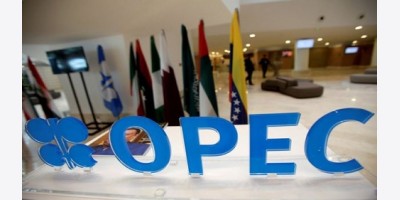By Reuters
* Extra shipments head to India, sales strong to Syria
* Iran may be drawing down oil stored on tankers
LONDON, March 26 (Reuters) - Iran's oil exports have stayed above levels allowed under Western sanctions for a fifth month, according to sources who track tanker movements, in a further sign that a deal to ease some restrictions is helping Tehran sell more crude.
Under the deal, Iran's exports are supposed to be held at an average 1 million bpd for the six months to July 20. But shipments to Asia have topped that level at least since November, according to ship tracking data.
The Obama adminstration believes that exports will fall in coming months and on average will fall to the 1 million bpd level stipulated by the interim agreement which went into effect on January 20.
Iran's crude exports have averaged 1.3 million barrels per day (bpd) in March, down from 1.4 million bpd in February, said one of the sources. That is still an elevated rate, as imports of Iranian oil in 2013 averaged 1.1 million bpd.
A second tanker tracking source said Iranian crude exports, excluding to Japan, reached 1.28 million bpd in March and included sales to top buyers such as China and India as well as South Korea, Turkey and Tehran's major ally Syria. That points to steady Iranian shipments overall, he added.
Syria is not one of the countries that Washington sanctions for taking Iranian oil.
"Shipments to India stand out in March and it looks like there has been a slight increase which works out at around 326,000 bpd, up by around 14 percent from February," the source, who declined to be identified, said.
A third tanker tracking source estimated total shipments in March had fallen a little, but were still above 1.1 million bpd. "March is slightly lower. Perhaps the U.S. has pressured some of the Asian buyers," the source said.
The rising trend in exports follows a temporary agreement reached between world powers and Iran last year aimed at undermining Tehran's nuclear programme and allowing for a modest easing in sanctions pressure. This, say industry sources, has improved sentiment and reduced political risk for the OPEC member's clients mostly in Asia.
Two of the sources said Iran's crude exports were around 1.4 million bpd in February, broadly in line with ship loading data seen by Reuters earlier this month which put exports excluding those to Syria at 1.28 million bpd.
Data from the International Energy Agency earlier this month showed global imports of Iranian oil, includes condensate, hit a one-year high in both January and February at 1.41 million bpd.
SYRIAN IMPORTS
Since Washington imposed tough sanctions targeting Tehran's oil exports in 2012, officials from the Departments of State, Treasury and Commerce have been visiting consumer countries to help them find alternatives to Iranian crude.
A U.S. government source said the Obama administration believes that Tehran is unable to sell oil to Syria.
Rather it is "giving it away" to Syria which shows sanctions on Iran are working as cash-strapped Tehran would prefer to sell the oil to customers like China, India and Japan. The source added that the Obama administration is focused on ensuring that any supplies to the Assad regime are curtailed.
Backers of tough sanctions say the emerging data has showed Iran was getting more relief than Washington had said it would under the six-month Joint Plan of Action deal (JPOA).
"In order to keep exports within the U.S. limits during the period of the JPOA ... they will have to reduce exports by over 40 percent over the next three months in order not to exceed the average of last year," said Tim Wilson of U.S. based think tank Foundation for Defense of Democracies (FDD), which backs tougher measures.
"During 2013, after the election of Iranian President (Hassan) Rouhani, the number of voyages steadily began to increase and since the announcement of the JPOA in November 2013 they appear to have leapt back."
Tanker tracking sources said separately the volume of Iranian oil held on tankers at sea or anchorages was starting to drop after several months.
One source said the number of tankers storing oil had fallen to between 11 to 13 vessels from 16 in February. Floating storage peaked in 2011 with over 20 supertankers, each able to carry a maximum of 2 million barrels, holding oil.
"It is currently back to nine vessels. This is based on the assumption that a tanker not making a voyage for more than three months is/was being used for floating oil storage," the FDD's Wilson said separately. (Additional reporting by Timothy Gardner in Washington, editing by William Hardy)























